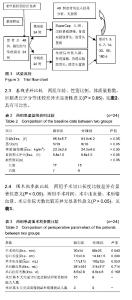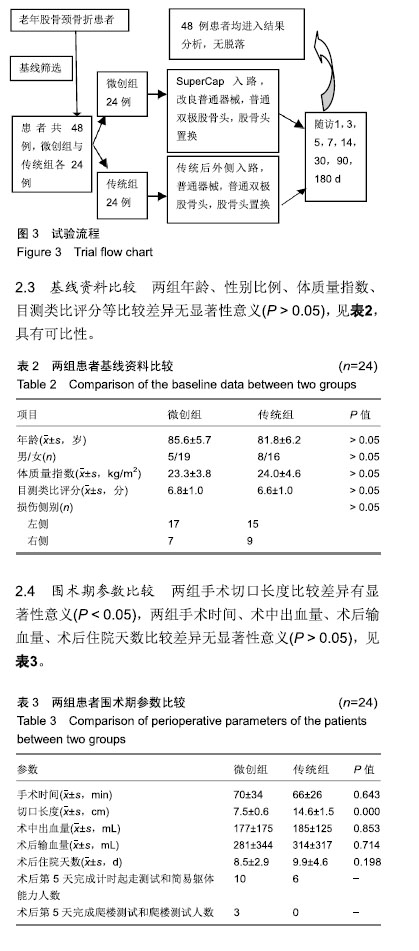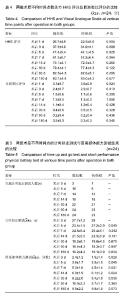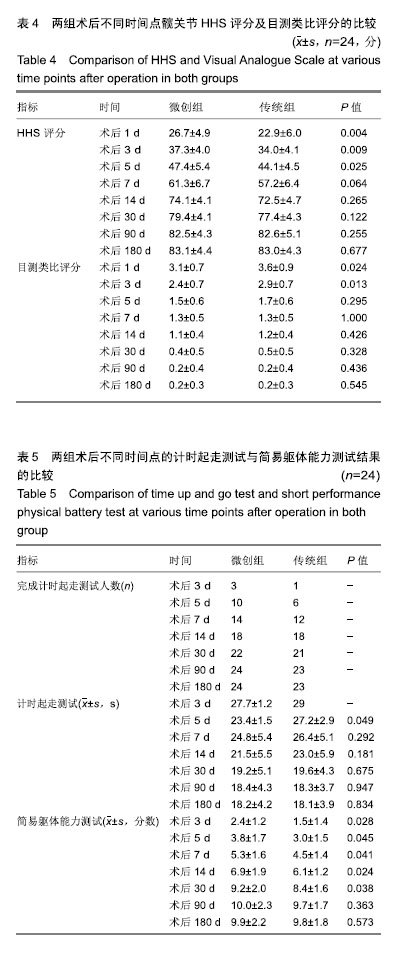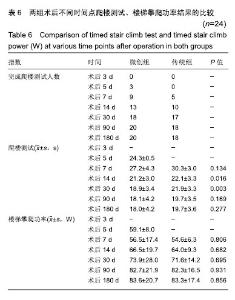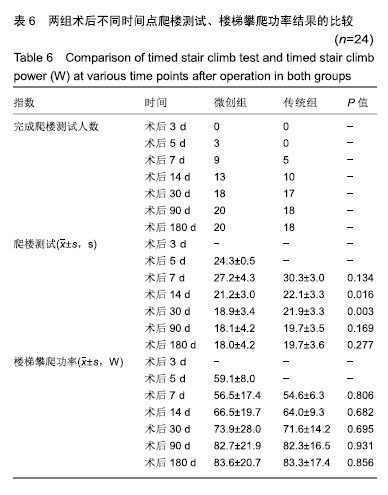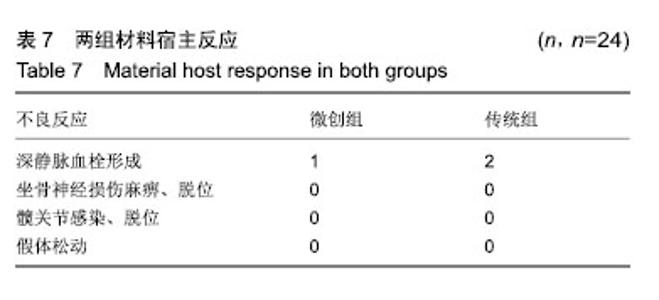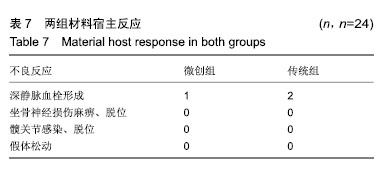| [1]Becker DJ,Kilgore ML,Morrisey MA.The societal burden of osteoporosis. Curr Rheumatol Rep.2010;12(3):186-191.[2]Frerichmann U,Raschke MJ,Stockle U.Proximal femoral fractures in the elderly. Data from health insurance providers on more than 23 million insured persons-part 2. Unfallchirurg. 2007;110(7):610-616.[3]Roche JJ,Wenn RT,Sahota O.Effect of comorbidities and postoperative complications on mortality after hip fracture in elderly people: prospective observational cohort study. Br Med J.2005;331(7529):1374.[4]徐辰,毛远青,朱振安.老年股骨颈骨折治疗进展[J].国际骨科学杂志,2015,52(2):109-113. [5]Murphy SB,Tannast M.Conventional vs minimally invasive total hip arthroplasty. A prospective study of rehabilitation and complications. Orthopade.2006;35(7):761-764,766-768.[6]张涵,员晋,兰海.Super PATH微创髋关节置换术治疗老年股骨颈骨折[J].中华创伤骨科杂志,2018,20(5):400-406.[7]贾建波,禹宝庆,吴良浩,等.传统后路与微创SuperPath入路的半髋置换治疗老年股骨颈骨折疗效比较[J].中华老年骨科与康复电子杂志,2017,3(4):223-231.[8]Qurashi S,Chinnappa J,Rostiano P.SuperPATH Minimally Invasive Total Hip Arthroplasty-An Australian Experience. Reconstruct Rev.2016;6(2):43-48. [9]Guralnik JM,Simonsick EM,Ferrucci L,et al. A short physical performance battery assessing lower extremity function: association with self-reported disability and prediction of mortality and nursing home admission.J Gerontol.1994;49(2): M85-94. [10]Bean JF,Kiely DK,LaRose S,et al.Is stair climb power a clinically relevant measure of leg power impairments in at-risk older adults? Arch Phys Med Rehabil.2007;88(5):604-609.[11]Berger RA.Mini-incision:two for the price of one!J Orthoped. 2002;25:472498.[12]夏良政,李胜华,袁中山,等.普通双极股骨头SuperPATH入路治疗老年股骨颈骨折[J].中国组织工程研究, 2018,22(19): 2953-2960.[13]Chow J,Penenberg B,Murphy S.Modified micro-superior percutaneously assisted total hip:early experiences & case reports.Curr Rev Musculoskelet Med.2011;4(3):146-150.[14]Rasuli KJ,Gofton W.Percutaneously assisted total hip(PATH) and Supercapsular percutaneously assisted total hip (SuperPATH) arthroplasty:learning curves and early outcomes. Ann Transl Med.2015;3(13):179-185.[15]Gofton W, Chow J,Olsen KD,et al. Thirty-day readmission rate and discharge status following total hip arthroplasty using the supercapsular percutaneously assisted total hip surgical technique. Int Orthop.2015;39(5):847-851.[16]Abe K,Yuda S,Yasui K,et al.Soleal vein dilatation assessed by ultrasonography is an independent predictor for deep vein thrombosis after major orthopedic surgery.J Cardiol. 2017; 69(5):756-762.[17]Murphy SB. Technique of tissue preserving,minimally invasive total hip arthroplasty using a superior capsulotomy.Oper Tech Orthop.2004;14(2):94-101.[18]Anterior Total Hip Arthroplasty Collaborative Investigators, Bhandari M,Matta JM,et al.Outcomes following the single-incision anterior approach to total hip arthroplasty:a multicenter observational study. Orthop Clin North Am. 2009; 40:329-342.[19]Alexandrov T, Ahlmann ER, Menendez LR.Early clinical and radiographic results of minimally invasive anterior approach hip arthroplasty.Adv Orthop.2014;2014:1-7.[20]Chow J,Penenberg B,Murphy S.Modified micro-superior percutaneously- assisted total hip: early experiences & case reports.Curr Rev Musculoskelet Med.2011;4:146-150.[21]Tsukada S,Wakui M.Minimally invasive intermuscular approach does not improve outcomes in bipolar hemiarthroplasty for femoral neck fracture.J Orthop Sci.2010; 15:753-757.[22]Schneider K, Audige L, Kuehnel SP,et al.The direct anterior approach in hemiarthroplasty for displaced femoral neck fractures.Int Orthop.2012;36:1773-1781.[23]Swift C,Ftouh S,Langford P,et al. Interdisciplinary management of hip fracture.Clin Med (Lond).2016;16(6): 541-544[24]DeAngelis J, Ademi A, Staff I, et al. Cemented versus uncemented hemiarthroplasty for displaced femoral neck fractures: a prospective randomized trial with early follow-up. J Orthop Trauma.2010;26:135-140.[25]Ning G,Li Y,Wu Q,et al. Cemented versus uncemented hemiarthroplasty for displaced femoral neck fractures:an updated meta-analysis.Eur J Orthop Surg Traumatol.2014; 24:7-14.[26]贾建波,禹宝庆,吴良浩.微创SuperPath入路人工股骨头置换术治疗老年股骨颈骨折的近期疗效[J].中华创伤骨科杂志, 2016, 18(11):938-944.[27]李建,邱冰,甄东.SuperPATH入路与传统入路髋关节置换临床疗效的Meta分析[J].中国组织工程研究,2018,22(15):2453-2460.[28]Weber T,Al-Munajjed AA,Verkerke GJ,et al.Influence of minimally invasive total hip replacement on hip reaction forces and their orientations.J Orthop Res.2014; 32(12):1680-1687.[29]黄文文,尹东,黄宇,等.SuperPATH和前外侧小切口入路THA的短期疗效比较[J].实用骨科杂志,2018,24(7):593-596,604. |
